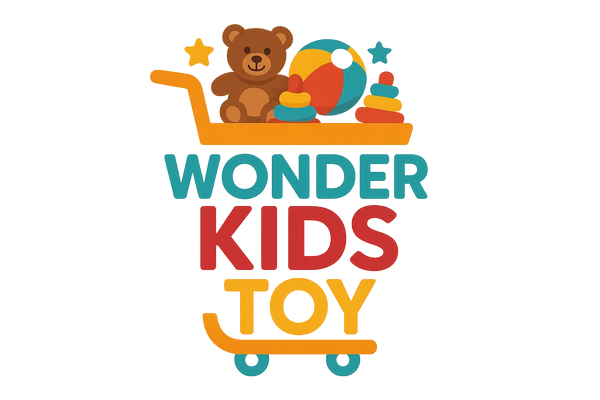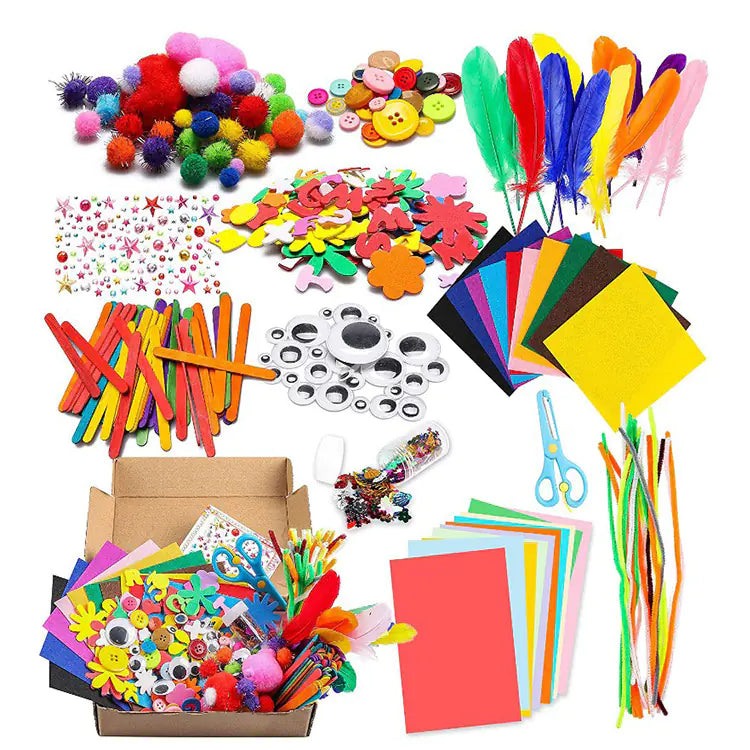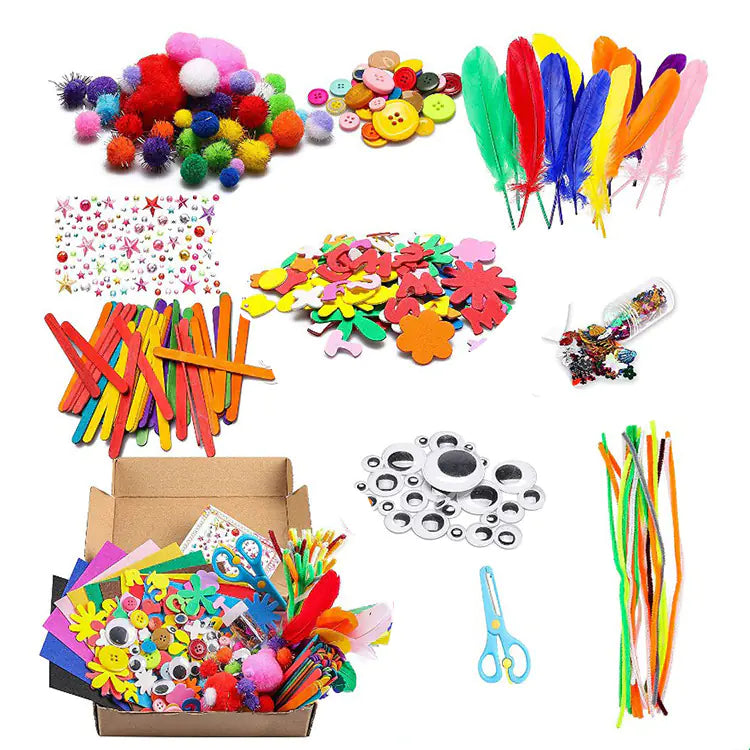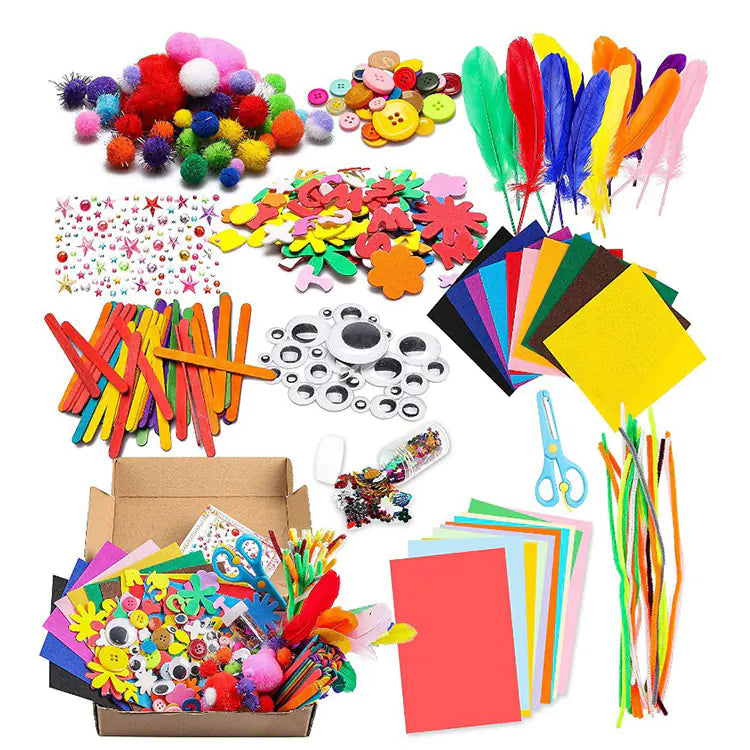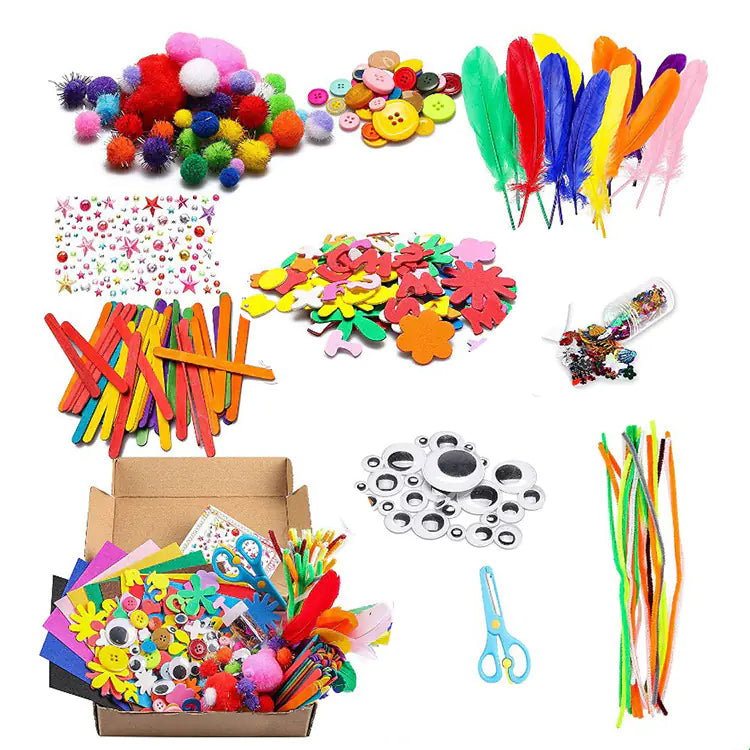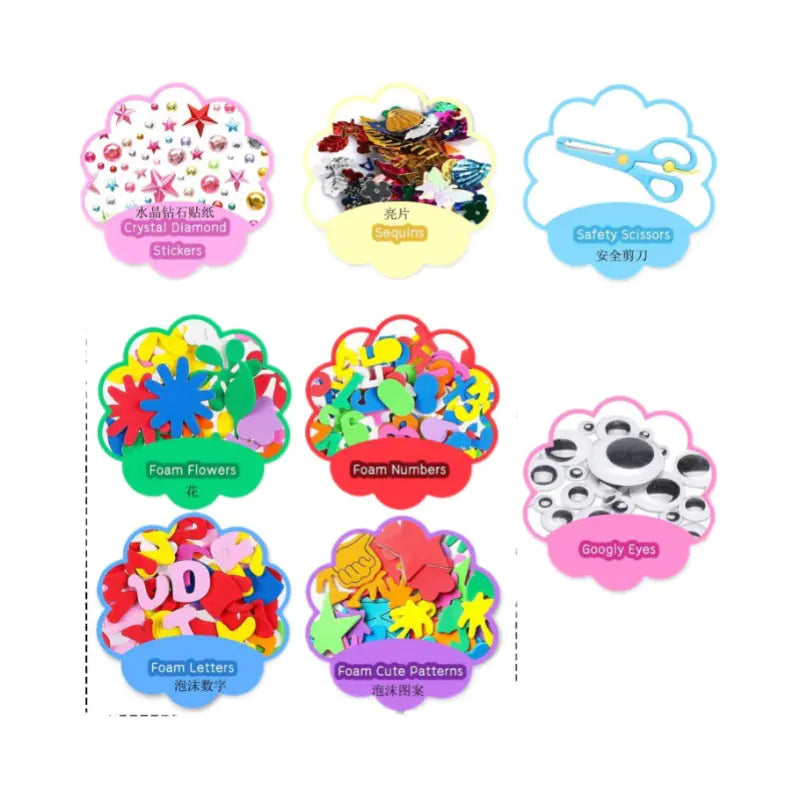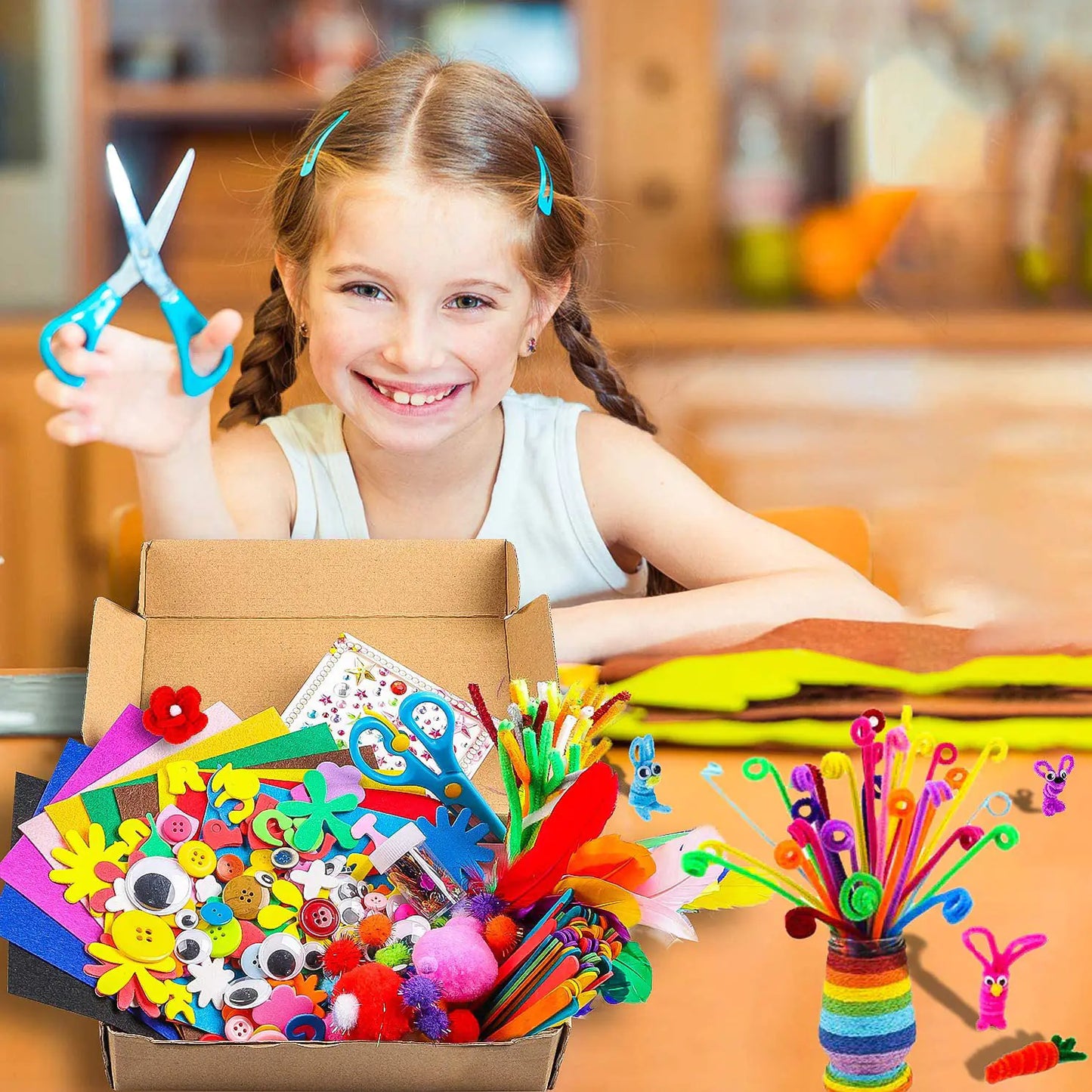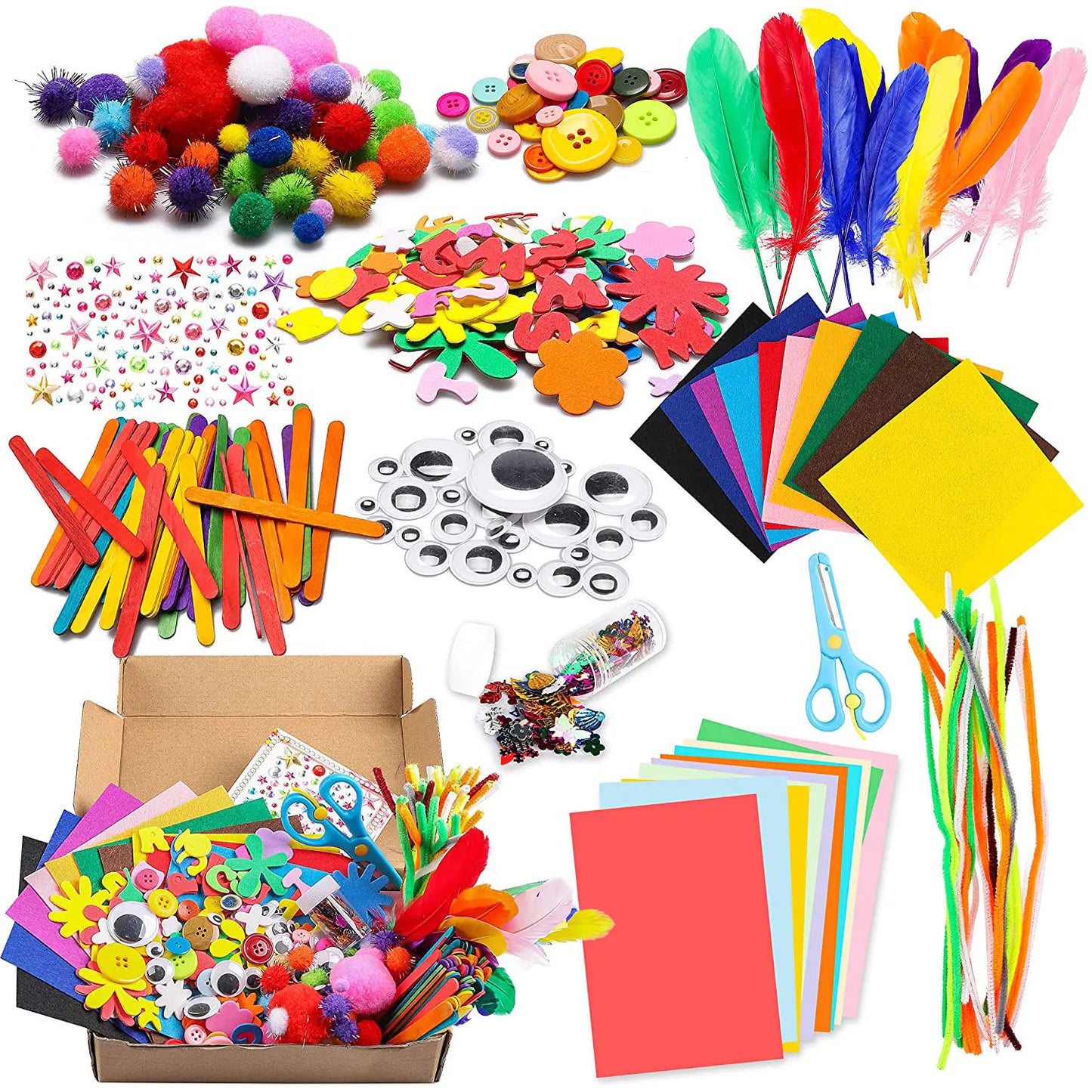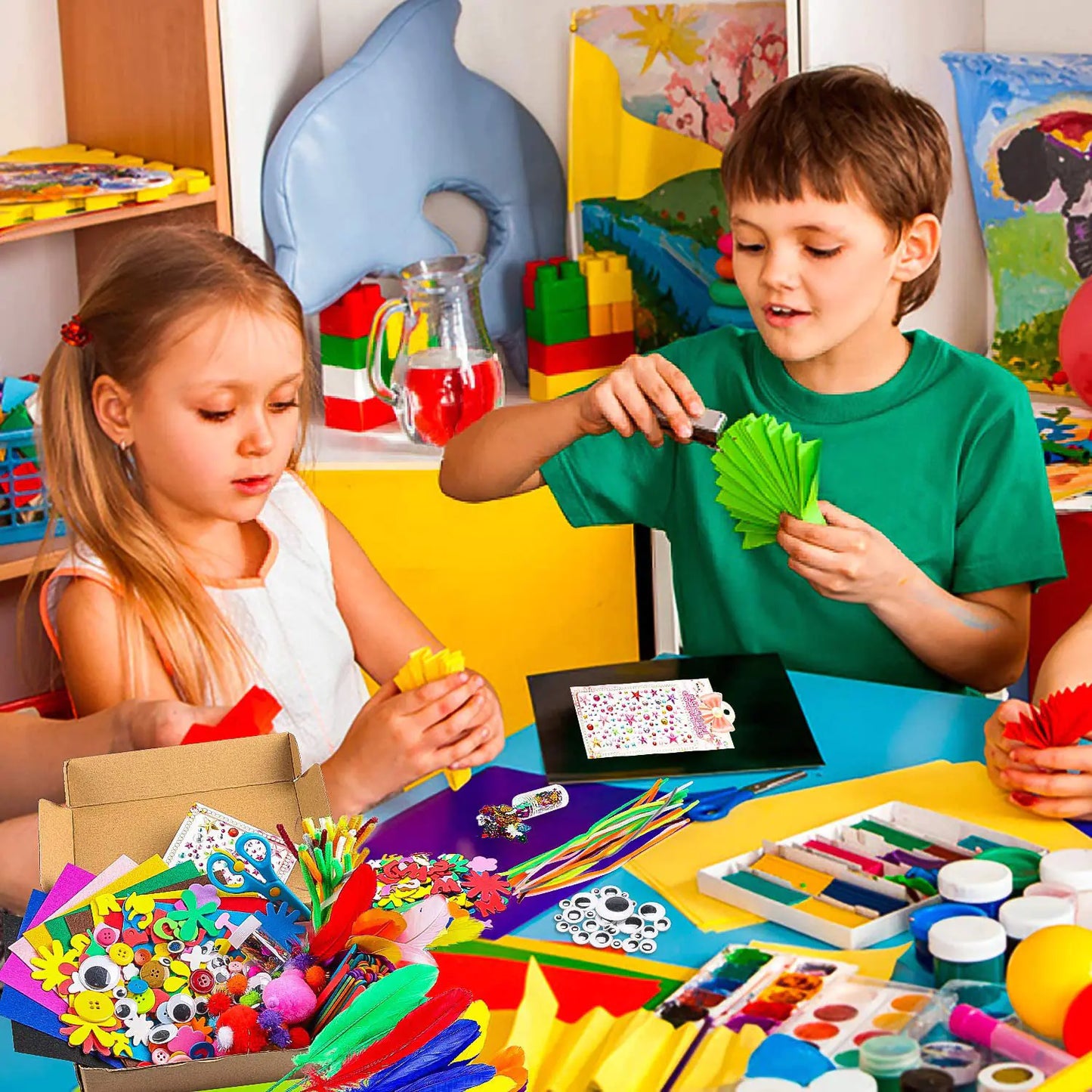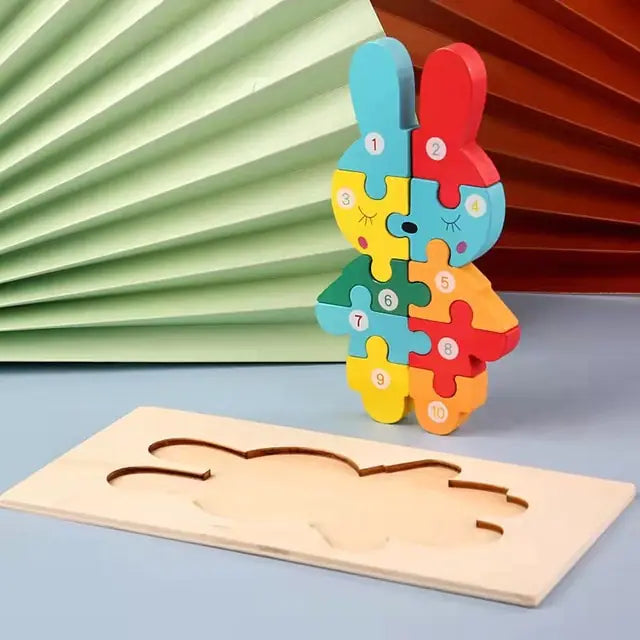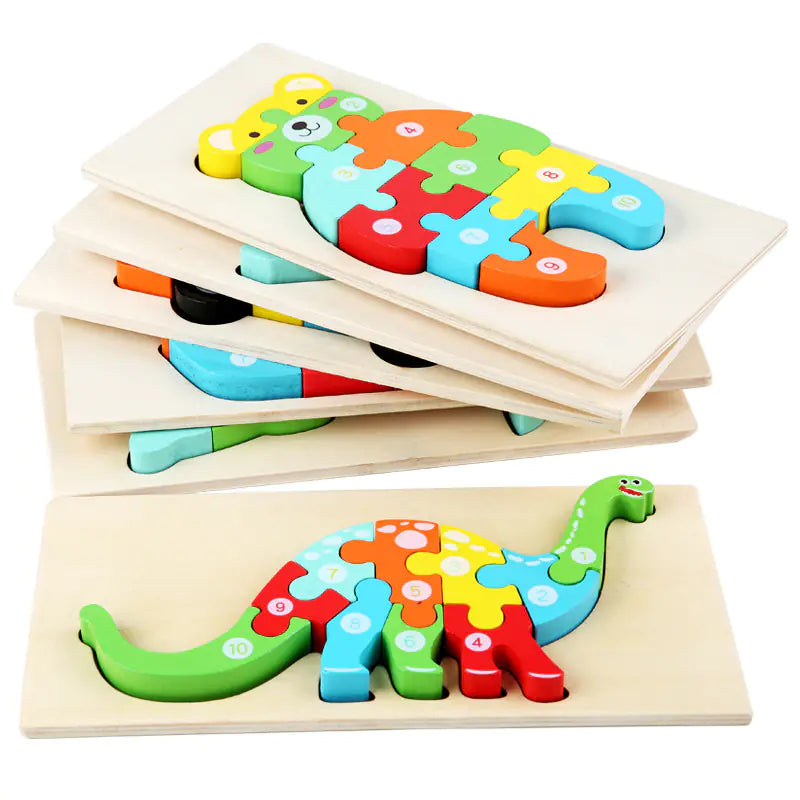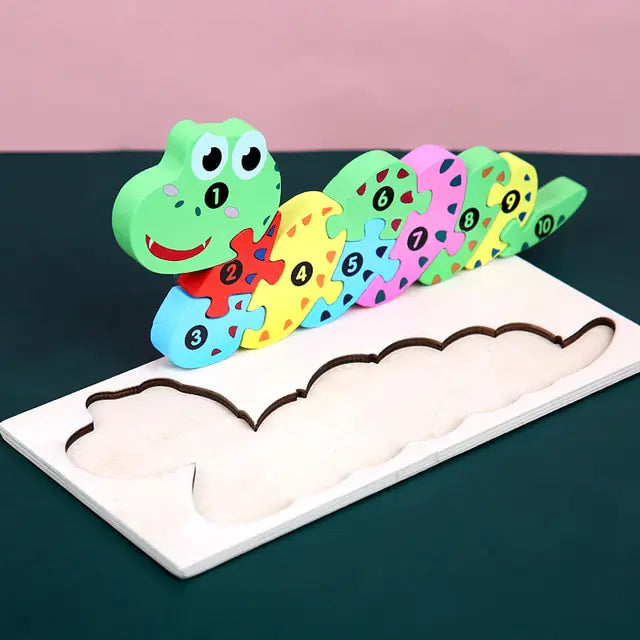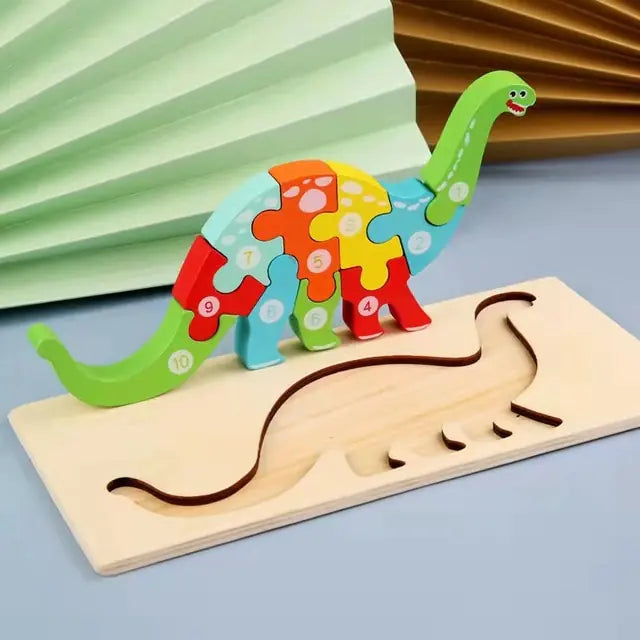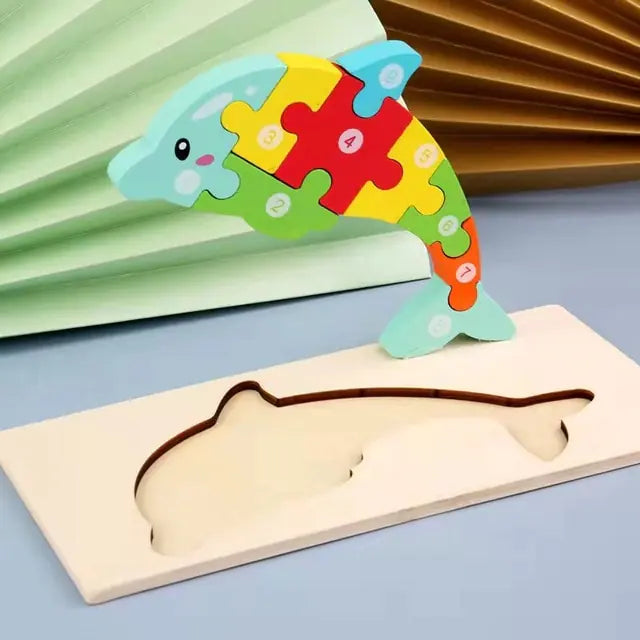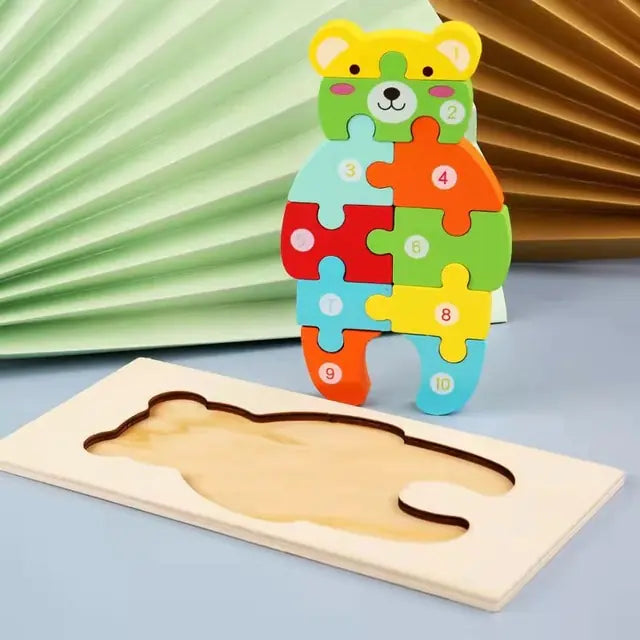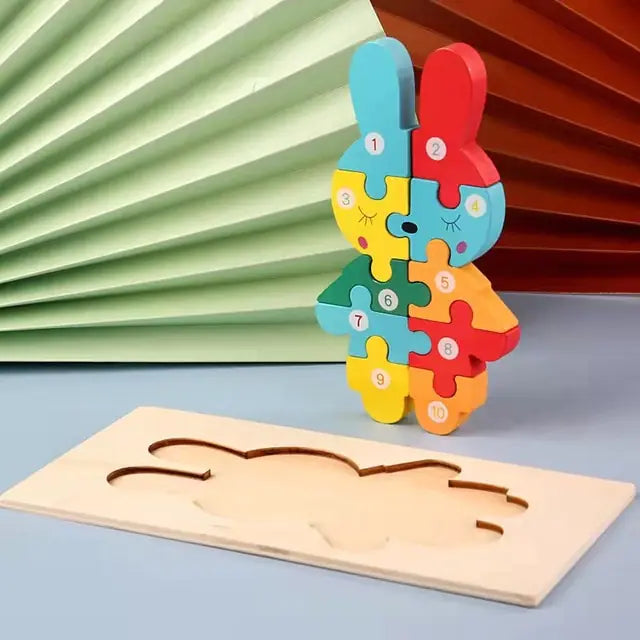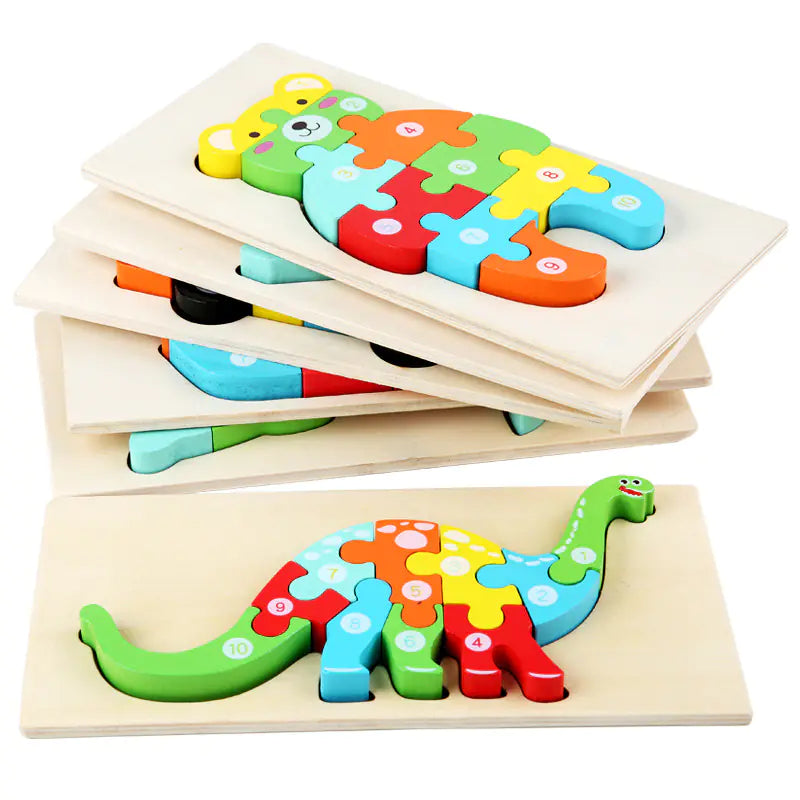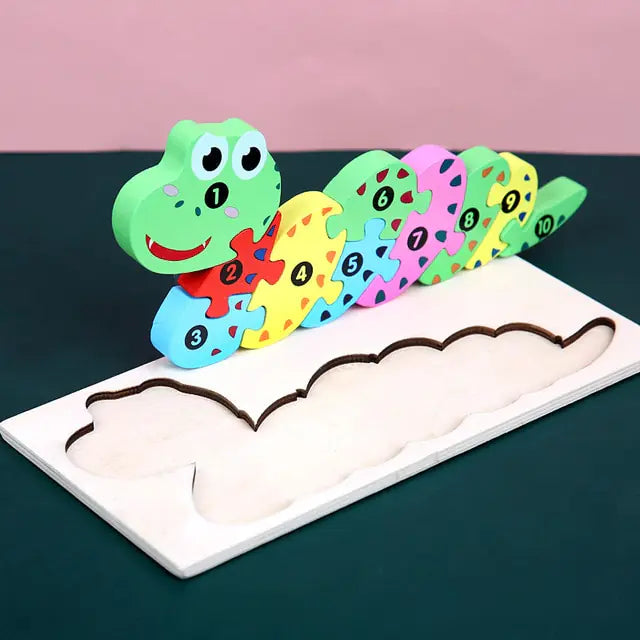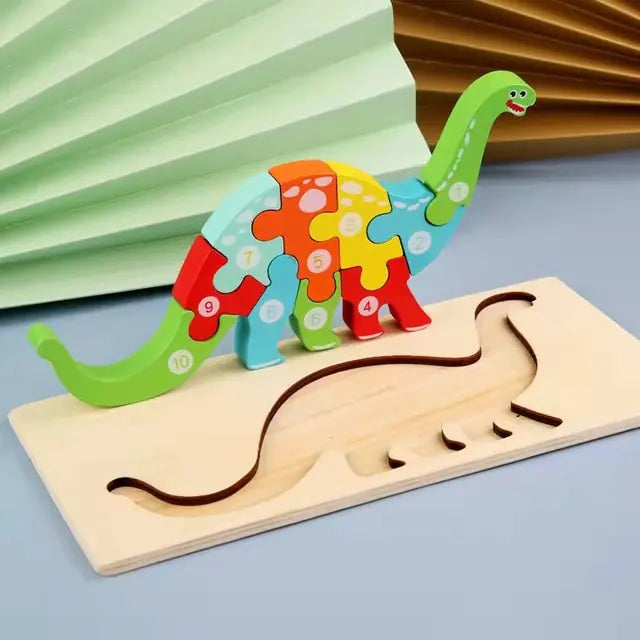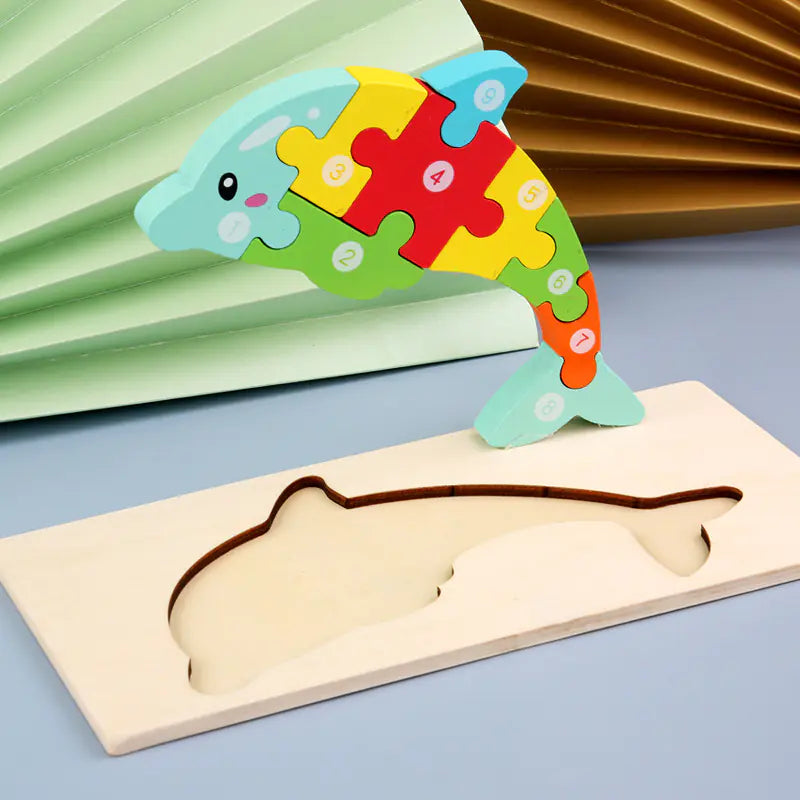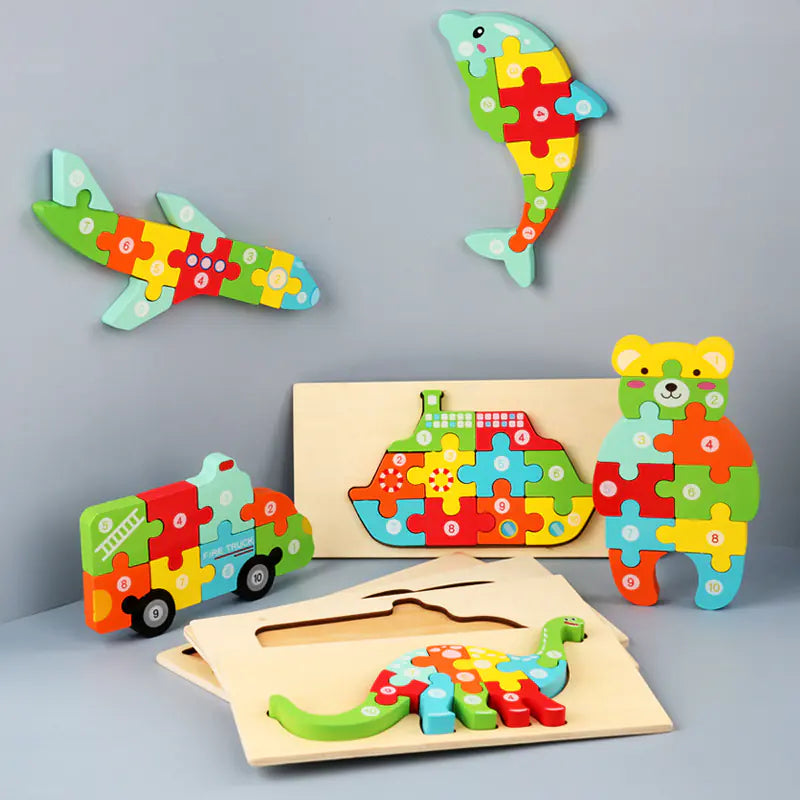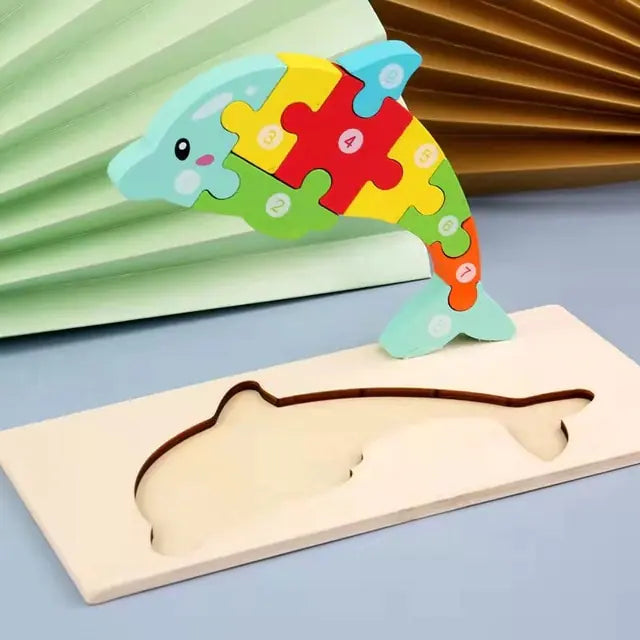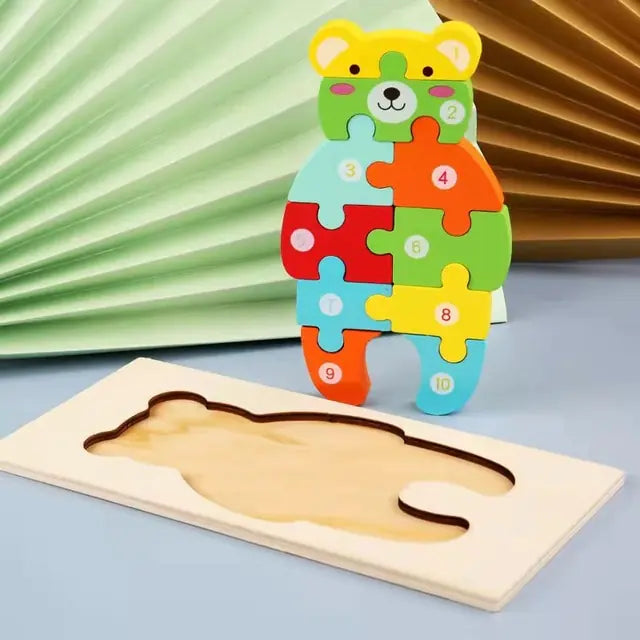In the digital age, the marriage of technology with traditional learning toys is revolutionizing how children play and learn. We can create educational toys that entertain and enhance cognitive development, problem-solving skills, and technological fluency by integrating intelligent features into classic playthings. This article delves into the innovative intersection of tactile play with tech advancements, offering insights into how parents, educators, and toy manufacturers can navigate this evolving landscape to benefit children's growth.
Marrying Tech with Tradition: The New Wave of Learning Toys

Understanding the Fusion of Digital and Physical Play
As a parent, I always seek ways to give my kids the best learning experiences. And let me tell you, the latest trend in educational toys is something I'm excited about! We're discussing a blend of the good ol' physical toys with a dash of digital magic.
Educational toys have come a long way from simple blocks and puzzles. Now, they're getting smarter and designed to engage our kids in ways we never thought possible.
The beauty of these tech-infused toys is that they're not just about staring at a screen. They're about touching, feeling, and experiencing learning in a multi-dimensional space.
Let's not forget about safety and privacy. As these toys get more innovative, we must ensure they're also safe for our little ones to use. It's all about finding that sweet spot where fun meets learning without compromising our kids' well-being. So, let's dive into this new wave of learning toys and see how they can benefit our children's development!
Evaluating the Impact on Child Development
As I delve into educational toys, I'm constantly amazed by their potential to shape our kids' development. It's not just about the fun factor—these toys are severe tools for growth. Expert insights suggest that combining technology and traditional play can significantly benefit fundamental learning.
When I look at qualitative measures like observational studies and teacher feedback, it's clear that tech-infused toys can spark curiosity and enhance problem-solving skills. And let's not forget the quantitative side of things. Pre- and post-test assessments show measurable improvements in literacy and numeracy after kids engage with these toys.
It's about striking the perfect balance—ensuring that our children are not only entertained but also intellectually stimulated.
Here's a snapshot of what I've seen in terms of engagement with multi-sensory toys compared to traditional ones:
- Increased attention span
- Higher interest in learning activities
- More creative play
- Better social interactions
The pilot studies are promising, but I'm eager to see how these toys will support sustained learning. It's an exciting time to be a parent, with many options to help our children grow in a tech-savvy world.
Navigating Safety and Privacy in Tech-Infused Toys
As a parent, I'm always looking for toys that educate and ensure my kids' safety. With the rise of tech-infused toys, navigating the waters of safety and privacy is crucial. Smart toy vulnerabilities could let cybercriminals video-chat with kids, and that's a risk no parent should take lightly.
To tackle this, I've put together a few steps to help us stay vigilant:
- Always research and purchase toys from reputable brands that prioritize security.
- Regularly update the toy's software to patch any security flaws.
- Monitor your child's playtime and be aware of the toy's features and capabilities.
- Educate your kids about online safety and the importance of not sharing personal information.
Remember, the goal is to blend learning with fun while keeping our kids out of harm's way.
New educational toys trends, like STEM toys and augmented reality puzzles, are fantastic but also bring new challenges. It's about balancing embracing innovative learning tools and maintaining a safe play environment for our children.
Beyond the Screen: Sensory Play Meets Technology

Incorporating Multi-Sensory Elements in Toy Design
When I think about the toys that have impacted my kids, they always engage multiple senses. Toys that combine sight, sound, touch, and even smell and taste offer a more immersive experience that can be both educational and downright fun. It's not just about flashy lights or cool textures; it's about creating a symphony of stimuli that helps little brains grow and learn.
Engaging multiple senses isn't just a gimmick—it's backed by research. By stimulating various sensory channels, toys can cater to different learning styles and keep kids absorbed in play. Here's a quick rundown of what to look for:
- Visual: Bright colors and patterns to catch the eye
- Auditory: Sounds and music to stimulate hearing
- Tactile: Varied textures to explore by touch
- Olfactory: Safe scents to spark curiosity
- Gustatory: Edible components for safe tasting
Remember, the key is balance. You want to captivate your child's attention without overwhelming their senses.
As a parent, I'm always looking for toys that provide a rich, multi-sensory experience. These are the ones that my kids come back to time and again and the ones I feel good about investing in. After all, if I bring a new toy into our home, I want it to contribute meaningfully to my child's development.
The Role of AR and VR in Sensory Learning
As a parent, I'm always on the lookout for toys that not only entertain but also educate. That's where Augmented Reality (AR) and Virtual Reality (VR) come in, offering a new dimension to sensory play. VR can transport our kids to different environments, making learning an adventure. Imagine a science kit that uses VR to take your child on a journey through the human body or the far reaches of space!
Sensory play is crucial for development, and AR toys blend the digital with the physical, sparking creativity and problem-solving. It's not just about what they see; it's about engaging all their senses, making each experience more impactful. And let's not forget, these toys can adapt to your child's learning pace, providing a truly personalized experience.
When choosing toys, it's important to consider your child's age and skill level. A VR science kit might be perfect for older kids, while younger ones could benefit from simpler AR puzzles that encourage exploration.
Here's a quick list of benefits that AR and VR toys bring to the table:
- Immersive learning experiences
- Enhanced creativity and problem-solving
- Personalized learning journeys
- Preparation for a tech-savvy future
Ensuring Accessibility for Diverse Learning Styles
As a parent, I've seen firsthand how each child's learning journey is unique. That's why I'm a big advocate for toys designed with accessibility in mind. These toys aren't just fun; they're a bridge to learning for kids with different strengths and preferences. Toys that cater to tactile, auditory, and visual learners can make all the difference in fostering a love for learning and development.
Here's a quick rundown of what to look for:
- Multi-sensory features that engage more than just sight
- Adjustable difficulty levels to suit various abilities
- Clear and straightforward instructions for independent play
Remember, the goal is to create an inclusive environment where all children can thrive.
Robotic toys, for example, are fantastic for this. They make coding accessible and can adapt to a child's learning pace. Plus, they're just plain cool! Whether your child is a visual learner or gets more out of hands-on activities, there's a toy out there that can support their growth while keeping them engaged and entertained.
Coding for Kids: Toys That Teach and Entertain

Selecting the Right Coding Toys for Different Ages
As a parent, I've seen firsthand how a suitable coding toy can spark a child's interest in technology and programming. Coding toys are designed to cater to various skill levels, from the most straightforward block-based puzzles for the little ones to more complex projects for teens. It's all about finding that sweet spot where the toy is challenging enough to keep them engaged but not so complex that it becomes frustrating.
For the younger crowd, ages 5-8, look for toys that introduce basic coding concepts through play. These toys often use colorful blocks or simple commands to teach the fundamentals. As kids grow, the toys can grow with them, offering more advanced challenges and the opportunity to dive into real-world programming languages.
Remember, the goal is to make learning fun and accessible while laying a solid foundation in coding principles.
Here's a quick guide to help you choose:
- Ages 5 – 8: Look for toys that teach basic logic and problem-solving through simple, playful interactions.
- Ages 8 – 11: Transition to toys that introduce more complex concepts and offer a bridge to structured programming.
- Ages 14+: Opt for kits that delve into sophisticated projects, challenging creativity, and advanced programming skills.
Interactive Learning: From Blocks to Bots
As a parent, I've seen how suitable toys can spark a child's imagination and teach valuable skills. Toys are essential for children's development, promoting cognitive, motor, language, and social skills. And when it comes to preparing our kids for the future, STEM toys that integrate technology are a game-changer. They enhance spatial awareness, logical thinking, creativity, and coding skills, offering educational play that's both inclusive and growth-oriented.
Engaging with online platforms and coding toys like Botley the Coding Robot or the Edison educational robot can make learning more dynamic and relevant.
These toys provide an interactive introduction to programming, adapting to children's evolving capabilities. It's not just about playing with robots; it's about building them, understanding how they work, and developing a hands-on relationship with technology. Here's a quick look at how these toys can benefit different age groups:
- Ages 3-5: Toys that combine simple coding concepts with playful characters.
- Ages 6-8: More complex coding challenges with visual-based programming.
- Ages 9-12: Introduction to text-based coding and problem-solving tasks.
- Ages 13+: Advanced projects that involve real-world applications of coding.
Each step up introduces more sophisticated concepts, ensuring that as children grow, their toys grow with them. It's a seamless transition from tactile blocks to interactive bots, all while having a blast!
Tracking Progress and Adapting Challenges
As a parent, I've seen firsthand how important it is for kids to see their growth and achievements. I'm all about toys with completion goals and feedback mechanisms. These nifty features help our little ones track their progress, giving them that incredible sense of accomplishment. And let's be honest, who doesn't love a good pat on the back for a well-done job?
It's not just about hitting milestones, though. Adapting challenges to keep up with our kids' development is key. I mean, we want to keep them on their toes, right? That's where toys that evolve with our children's learning stages shine. They're like the gift that keeps on giving, offering new layers of complexity just when they're ready for it.
Here's a quick rundown of what to look for in toys that track and adapt:
- Emotionally intelligent interactions that create a quality emotional experience.
- Bright, engaging feedback that celebrates achievements.
- The ability to adjust difficulty levels for continued growth.
Remember, the goal is to foster a love for learning that lasts a lifetime. By choosing toys that track progress and adapt to challenges, we're setting our kids up for success, one playful step at a time.
The Role of Parents in Tech-Enabled Play

Choosing Educational Toys That Align with Family Values
As a parent, I'm always looking for toys that entertain and instill the values we cherish at home. It's about finding that sweet spot where fun meets education and where playtime reinforces the lessons we want our kids to learn. For instance, I prioritize toys that encourage independent learning, as they help my child develop self-reliance while exploring new concepts.
- Look for toys that promote creativity and problem-solving.
- Ensure the toys are age-appropriate and match your child's developmental level.
- Consider toys that integrate technology in a way that enhances traditional play.
It's essential to choose toys that resonate with our family's ethos, as these will be the ones that truly make a lasting impact on our children.
Ultimately, the goal is to provide our kids with a balanced play environment where they can intellectually and morally thrive. We're setting the stage for a lifetime of curious, thoughtful, and responsible learning by carefully selecting educational toys that align with our family values.
Setting Boundaries for Screen Time and Interactive Play
As a parent, I've learned that setting boundaries for screen time isn't just about limiting hours; it's about creating a healthy balance. Rules don't need to be extreme to be helpful. You can try setting specific times of the day or week open for screens so your child knows when to expect their digital playtime. This predictability can reduce conflicts and make transitions smoother.
- Establish clear screen time limits.
- Designate tech-free zones in the home
- Encourage other forms of play and creativity
It's also crucial to be involved in your child's digital world. By understanding the games and apps they're using, you can ensure they're engaging with content that's not just fun but also educational. Remember, the goal is to integrate technology to enhance learning, not to let it take over. And sometimes, the best way to do that is to put the screens down and pick up a traditional toy.
Balancing screen time with other activities is key to a well-rounded childhood. Let's not forget the value of simple, unplugged play in developing a child's imagination and social skills.
Encouraging Parent-Child Interaction Through Technology
As a parent, I've seen firsthand how tech can bridge the gap between my world and my child's play. Interactive tech toys aren't just about flashy lights and sounds; they're a gateway to shared experiences. For instance, when my little one tackles a digital puzzle, I cheer them on and offer hints. It's a bonding moment that's both educational and heartwarming.
Preschool pioneers explore cognitive challenges with puzzles and problem-solving toys. Integrating technology enhances these experiences for ages 3-5, making every 'aha!' moment much sweeter. And it's not just about the kids—parents get a lot out of this, too. We're learning to speak their language, the language of technology, a valuable skill in today's world.
Embracing tech in playtime means we're not just observers; we're active participants. We're not just watching our kids grow; we're growing with them.
Here's a quick list of ways to make the most of tech-infused play:
- Choose toys that encourage teamwork, like multiplayer video games or apps.
- Set aside time for joint activities, such as building a robot kit.
- Use apps that track progress to celebrate achievements and set new goals.
Remember, it's about finding the right balance. While screen time should be managed, the quality of interaction matters more than the quantity. By thoughtfully selecting toys and activities, we can ensure that technology serves as a tool for connection, not just entertainment.
STEM Toys: Building Blocks of a Tech-Savvy Generation

Exploring DIY Kits and Science Sets
As a parent, I always seek ways to blend fun with learning. That's where DIY kits and science sets come into play. They're a fantastic way to introduce kids to the wonders of science and engineering.
For example, the SparkFun Inventor's Kit is a treasure trove for young inventors. It's not just about following instructions; it's about experimentation and creativity. Kids can start with the basics and then branch out to create their unique projects. And let's not forget the littleBits Star Wars Droid Inventor Kit, which combines the thrill of building with the love of Star Wars.
The best part? These kits grow with your child. They start simple but can become as complex as your child's imagination allows.
Here's a quick list of benefits these kits offer:
- Encourages problem-solving and critical thinking
- Provides a foundation in STEM (Science, Technology, Engineering, and Math)
- Fosters creativity and innovation
- Provides a balance between screen time and tactile, hands-on activity
Remember, the goal is to make learning an adventure. Whether it's building a robot or conducting experiments, these kits lay the groundwork for a lifelong love of science.
Fostering Creativity and Innovation with STEM Toys
As a parent, I always look for toys that do more than entertain. STEM toys are game-changers, blending the fun of play with the fundamentals of science, technology, engineering, and math. These educational building sets and STEM toys enhance children's cognitive development, motor skills, creativity, and teamwork. Balancing fun with learning is critical for maximizing development and preparing kids for the future.
Encourage exploration with diverse toys, integrate art and music, and promote imaginative role-play. Educational toys foster creativity, problem-solving, and learning through play-based experiences, enhancing problem-solving skills and cognitive growth.
Here's a quick list of why STEM toys rock:
- They make complex concepts accessible.
- Kids learn to think critically and solve problems.
- They encourage curiosity and experimentation.
- Children can build and create, which boosts their confidence.
Remember, the goal isn't just to keep our kids busy and ignite a spark that could lead to a lifelong passion for innovation and discovery.
The Importance of Continual Learning and Experimentation
As a parent, I've seen firsthand how suitable educational toys can spark a child's imagination and foster a love for learning that lasts a lifetime. Continual education and experimentation are crucial to keeping that spark alive. It's not just about the initial excitement of a new toy but about how it can grow with your child, offering new challenges and learning opportunities at every stage.
- Fostering A Collaborative Approach: Learning alongside your child can be a rewarding experience for both of you. It promotes a collaborative spirit and shows your child that learning is lifelong.
- Emphasizing The Importance Of Coding: Coding isn't just a skill; it's a language of the future. By highlighting the relevance of coding in everyday life, we can inspire our kids to embrace it enthusiastically.
The journey through coding offers a unique blend of technical skill acquisition and personal growth, illustrating that education's future is not just about what we learn but how we learn.
Remember, learning doesn't have to be a chore; with suitable educational toys, it can be an exciting adventure filled with discovery and growth. By choosing toys that encourage continual learning and experimentation, we're not just preparing our kids for the next test but for life itself.
Personalized Learning: AI's Role in Educational Toys

Adapting to Individual Learning Paces with Smart Toys
As a parent, I've seen firsthand how each child is in a world of their own, especially when it comes to learning. Smart toys are changing the game by adapting to my kid's unique pace, making learning a truly personalized experience. These toys can adjust their difficulty and even the sensory outputs to match my child's preferences, ensuring they're playing and growing intellectually at every turn.
With diligence, creativity and an emphasis on developmental appropriateness, children can reap the benefits of smart toys while avoiding potential pitfalls.
It's not just about being smart; it's about being sensitive to each child's needs. Here's a quick list of what to look for in an innovative toy that adapts to individual learning paces:
- Customizable difficulty levels
- Adjustable sensory outputs (sound, visuals, etc.)
- Feedback mechanisms for parents and educators
- Safe, non-toxic materials
Remember, a one-size-fits-all approach may not cut it. By choosing toys that can be tailored, we're not just giving our kids a toy; we're giving them a companion that grows with them.
Data-Driven Insights for Customized Educational Experiences
As a parent, I've seen firsthand how a one-size-fits-all approach doesn't cut it for educational toys. Every child is unique, and their toys should be too. That's why I'm all for toys that adapt to my kid's learning style, with settings that can be tweaked for difficulty or sensory feedback. These innovative toys are game-changers, making learning inclusive and effective for a broader spectrum of kids.
The beauty of data-driven educational toys is their ability to evolve with your child. They're not just static playthings; they're dynamic learning partners.
Parents are more eager than ever to leverage technology that motivates their children to learn. STEM toys and DIY kits offering digital content are breaking traditional educational barriers. And with AI innovations like VR and AR, we're not just buying toys but investing in our children's development.
Here's a quick guide to help you incorporate these educational toys into your child's playtime:
- Look for toys that offer adjustable difficulty levels.
- Choose toys with customizable sensory outputs to match your child's preferences.
- Consider toys that provide feedback on your child's progress.
- Select toys that grow with your child, offering new challenges as they learn.
Balancing AI Assistance with Child Autonomy
As a parent, I'm always looking for toys that balance being educational and allowing my kids to be independent. AI-powered toys have been a game-changer in this respect. They adapt to my child's learning pace, providing the right amount of challenge without overwhelming them. It's like having a personal tutor who knows when to step in and when to step back, fostering a sense of autonomy in my little ones.
The key is to find toys that grow with your child, offering layers of complexity that unlock as they develop new skills.
Here's a quick rundown of what to consider when choosing AI-assisted toys:
- Age-appropriateness: Ensure the toy matches your child's developmental stage.
- Cultural considerations: Opt for toys that respect and reflect diverse backgrounds.
- Feedback mechanisms: Look for toys with clear goals and feedback to help your child track their progress.
- Emotional intelligence: Choose toys that create a quality emotional experience.
Remember, the goal isn't to replace human interaction but to complement it. By carefully selecting toys that respect your child's independence while providing intelligent support, you're setting them up for a lifelong love of learning.
Global Trends in Educational Toy Markets

Understanding Regional Preferences and Cultural Influences
As a parent, I've realized that educational toys aren't one-size-fits-all. Different regions have unique cultural and academic values, shaping the toys that resonate with kids. For instance, while some countries emphasize rote learning, others might focus on creative play. This means that the famous toys in one country might not be in another.
It's essential to consider these regional preferences when selecting educational toys for our children. Here's a quick list of points to keep in mind:
- Look for toys that reflect and respect cultural diversity.
- Choose toys that align with the educational values of your region.
- Be open to toys that might introduce your child to new cultures and ideas.
By being mindful of these aspects, we can provide our kids with a more enriching play experience that not only educates but also broadens their worldview.
Remember, the goal is to find toys that entertain, educate, and help our children become well-rounded individuals. This delicate balance can be achieved with a bit of research and understanding of the global educational toy market.
The Rise of EdTech Startups and Their Impact on Toy Innovation
As a parent, I've seen firsthand how the rise of EdTech startups has revolutionized how our kids play and learn. These innovative companies are at the forefront of blending technology with traditional toys, creating a whole new genre of educational playthings. They're making learning more interactive, personalized, and, frankly, more fun than ever before.
One of the most exciting aspects of this trend is how these startups harness the power of augmented reality (AR) and virtual reality (VR) to create immersive learning experiences. Imagine your child exploring the solar system or the human body in 3D from the living room!
It's not just about the cool factor, though. These tech-infused toys are designed to adapt to your child's learning pace, making education a truly tailored experience.
Here's a quick look at some benefits of EdTech startup innovations in educational toys:
- Enhanced engagement through interactive features
- Personalized learning paths for individual needs
- Development of critical thinking and problem-solving skills
- Exposure to STEM concepts from an early age
The impact on child development is clear. These toys are not just playthings; they're tools that help shape our children's futures. As we navigate this new landscape, it's important to remember that the ultimate goal is to support our kids' growth effectively and safely.
Adapting Educational Toys for Multilingual Learning
As a parent, I've seen firsthand how educational toys can bridge language barriers and foster a love for learning in multiple tongues. Toys that adapt to various languages enrich my child's vocabulary and enhance their cultural awareness. For instance, a talking plush toy that can switch between English, Spanish, and Mandarin becomes a cuddly companion on their multilingual journey.
Interactive books with audio narration in different languages are another great tool. They allow kids to hear correct pronunciations and intonations, which is crucial for language acquisition. And let's not forget about the power of play! Games requiring children to match images with words in various languages can be fun and educational.
By incorporating multilingual options into traditional toys, we're preparing our children for a globalized world where communication across cultures is key.
Here's a simple list to help you choose suitable multilingual educational toys:
- Look for toys with language settings or apps that offer multiple language options.
- Select toys that include cultural elements, providing context to the words learned.
- Ensure the toy is age-appropriate and engaging enough to keep your child's interest.
Remember, the goal is to make learning a new language as natural and enjoyable as possible. We can give our kids a head start in becoming global citizens with suitable toys.
Eco-Friendly and Sustainable Tech Toys

The Push for Green Materials in Toy Manufacturing
As a parent, I'm always on the lookout for toys that are not only educational but also environmentally responsible. It's heartening to see the toy industry embracing sustainability, with a growing trend towards eco-friendly materials. These toys discard harmful microplastics and prioritize renewable resources, aligning with our family's values of preserving the planet for future generations.
The shift towards green materials isn't just about the environment; it's about our kids' future. By choosing toys made from sustainable sources, we're teaching our children the importance of stewardship and the impact of their choices.
Here's a quick rundown of the benefits of eco-friendly toys:
- They're safer for our children and free from toxic chemicals.
- They reduce our carbon footprint thanks to sustainable production practices.
- They often come with educational aspects that teach kids about sustainability.
The Association of European Toy Manufacturers (AEFJ) has affirmed that the sector is actively reducing packaging and implementing measures related to reuse and using renewable energies in toy production. I'm thrilled to support this movement, and I encourage other parents to join in making conscious choices for their children's playtime.
Renewable Energy and Recyclability in Toy Design
As a parent, I'm always on the lookout for toys that are not only educational but also environmentally friendly. Renewable energy and recyclability are becoming critical factors in toy design, and it's exciting to see how these elements are being integrated. For instance, toys like the 6 in 1 Super Solar Recycler Kit from Unicorn Enterprises Corp. are a fantastic way to introduce kids to green energy. They learn about solar power and the importance of recycling materials, all while having fun.
It's not just about playtime; it's about instilling values and knowledge that will last a lifetime.
Moreover, these eco-friendly toys often come with the added benefit of being made from non-toxic materials, ensuring the safety of our little ones. By choosing toys that emphasize sustainability, we're teaching our children to be conscious of their environment and the impact they have on it. Educational toys like Learning Resources 29 and Thames & Kosmos 28 promote STEM skills, problem-solving, and creativity in children, fostering fun learning experiences and social awareness.
Educating Kids on Sustainability Through Play
As a parent, I'm always looking for ways to teach my kids valuable life lessons in a fun and engaging manner. Eco-friendly toys offer a solution, providing safe, educational, and environmentally responsible options for children's playtime. By choosing toys made from sustainable materials, we can teach our children the importance of protecting our planet. Here's how I like to incorporate these lessons into play:
- Collecting Natural Materials: During our outdoor adventures, I encourage my kids to gather leaves, sticks, and stones. We use these treasures to create art or as props in imaginative play, emphasizing the beauty of the natural world.
- Sensory Nature Play: We explore the environment through sensory play, which helps my kids develop a deeper connection with nature. Feeling the texture of bark or smelling different flowers, they learn to appreciate and care for the earth.
- Honeybee Theme Play: We pretend to be bees pollinating flowers, which leads to discussions about the importance of bees in our ecosystem and the need to protect them.
By making sustainability a part of playtime, we're not just having fun; we're preparing our kids to be mindful stewards of the environment. It's a win-win situation where they learn to cherish nature while developing their creativity and problem-solving skills.
The Future of Play: Predictions and Possibilities

Emerging Technologies Set to Transform Playtime
As a parent, I always look for the latest and greatest ways to keep my kids engaged and learning. Interactive tech toys lead the charge, blending traditional play with cutting-edge education. These toys aren't just fun; they're powerful tools for developing critical skills like problem-solving and coding. Imagine shape sorters and puzzles that enhance coordination and cognitive skills in our little ones.
Emerging technologies such as AR and VR take sensory play to new heights, creating immersive worlds for children to explore. It's not just about seeing and touching anymore; it's about experiencing and interacting. This kind of play can transport our kids to different environments, all while they're safely home.
We're entering an era where toys adapt to the individual child, making learning a truly personalized journey.
Accessibility is critical, and I'm thrilled to see toys that cater to diverse learning styles. It's about ensuring every child can benefit from these technological wonders regardless of their abilities. Here's a quick list of what to look for in the next generation of educational toys:
- Multi-sensory interaction
- Personalized learning experiences
- Safe and private data handling
- Eco-friendly and sustainable designs
The future is bright, and I can't wait to see how these technologies continue to revolutionize playtime for our kids.
Anticipating Changes in Learning Paradigms
As we look ahead, it's clear that the educational landscape is ripe for transformation. We're not just adopting new tools; we're rethinking the essence of learning to prepare our kids for the future better. Imagine a world where classrooms morph into playgrounds of the mind, where educational toys and play-based learning are at the forefront. This isn't just a dream; it's the direction we're heading, and the benefits are immense.
By integrating technology with traditional learning toys, we encourage creativity, social skills, and emotional intelligence in our children's development.
The shift towards more dynamic and personalized learning experiences is already underway. Here's what we can anticipate:
- A move from one-size-fits-all education to tailored learning journeys.
- Greater emphasis on life skills prepares children for modern life's complexities.
- The rise of multi-sensory educational toys that cater to diverse learning styles.
As parents, it's exciting to be part of this evolution, ensuring our children are equipped to thrive in a world where change is the only constant.
Preparing for the Next Generation of Educational Toys
As we look towards the future, it's clear that the next generation of educational toys will be more than just playthings; they'll be partners in our children's learning journeys. Innovative designs will continue to emerge, blending the nostalgia of classic toys with cutting-edge technology to create experiences that are both familiar and thrillingly new.
Personalization is vital, with toys adapting to each child's unique learning pace and style. Imagine a toy that grows with your child, challenging them with new puzzles and concepts as they develop. This isn't just a dream—it's the direction we're heading in, and I'm here to guide you through these exciting advancements.
- Toys that adapt to learning levels
- Interactive challenges that evolve
- Engaging play that educates
We're not just preparing our kids for the future; we're shaping the future itself with every educational toy we introduce into their lives.
The landscape of educational toys is ever-changing, and staying informed is crucial. From the increased demand for classic toys that offer comfort and connection to the need for ongoing innovation and personalization, we're witnessing a dynamic shift in how we think about play and education. Let's embrace this change and give our kids the tools they need to succeed in a world where technology and tradition coexist beautifully.
As we look towards 'The Future of Play: Predictions and Possibilities,' we invite you to explore the innovative world of 3D educational toys at Wonder Kids Toy Store. Our multifunctional puzzles and hands-on learning experiences are designed to unlock creativity and enhance cognitive skills in children. Don't miss out on the opportunity to transform playtime into an adventure of learning and fun. Visit our website to discover our latest collection and give your child the gift of imaginative play!
Wrapping It Up: The Future of Play and Learning
As we've journeyed through the exciting world of integrating technology with traditional learning toys, it's clear that the future of educational play is bright and boundless. From the tactile joy of classic toys to the interactive wonders of tech-infused playthings, there's a whole universe of possibilities for our kids to explore. Remember, the key is balance—melding the old's charm with the new's innovation. So, let's embrace this blend, encourage our little ones to dive into play that educates, and watch as they build skills that will last a lifetime. Happy playing, and here's to a future where learning is always an adventure!
How can technology enhance traditional learning toys?
Technology can enhance traditional learning toys by adding interactive elements, such as sounds, lights, and digital interfaces, providing dynamic feedback and engaging children in a multi-sensory learning experience.
What are the benefits of tech-infused toys for child development?
Tech-infused toys can benefit child development by promoting cognitive skills, problem-solving abilities, creativity, and critical thinking. They also offer personalized learning experiences and can adapt to individual learning paces.
How do I ensure the safety and privacy of my child when using tech-enabled toys?
To ensure safety and privacy, choose toys with robust security features, supervise your child's playtime, and educate them on safe digital practices. Also, check for compliance with safety and privacy regulations.
What is the role of AR and VR in educational toys?
AR and VR in educational toys provide immersive and interactive learning experiences that can transport children to various environments, enhancing their understanding and retention of information.
How can I select a suitable coding toy for my child?
Select the suitable coding toy by considering your child's age, interests, and skill level. Look for toys that balance educational value and entertainment to engage your child.
What should parents consider when introducing technology into their child's playtime?
Parents should consider the educational value of the toy, the amount of screen time involved, and whether the toy encourages parent-child interaction. It's also essential to align the toy with family values and set boundaries for its use.
How do STEM toys contribute to a child's learning experience?
STEM toys contribute to a child's learning by fostering creativity, innovation, and an interest in science and technology. They provide hands-on experience with real-world problems and encourage continual learning.
What are the global trends in educational toy markets?
Global trends in educational toy markets include a growing interest in eco-friendly materials, a rise in ed-tech startups, an emphasis on multilingual learning, and the integration of AI for personalized experiences.
